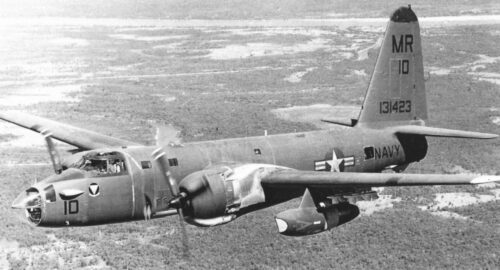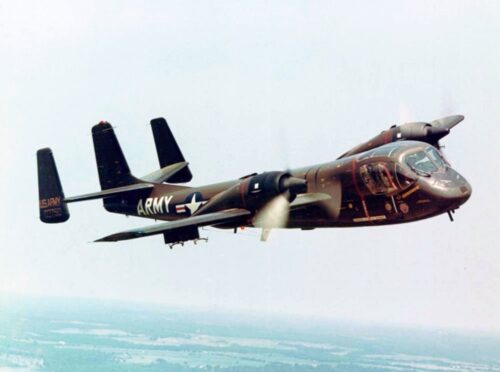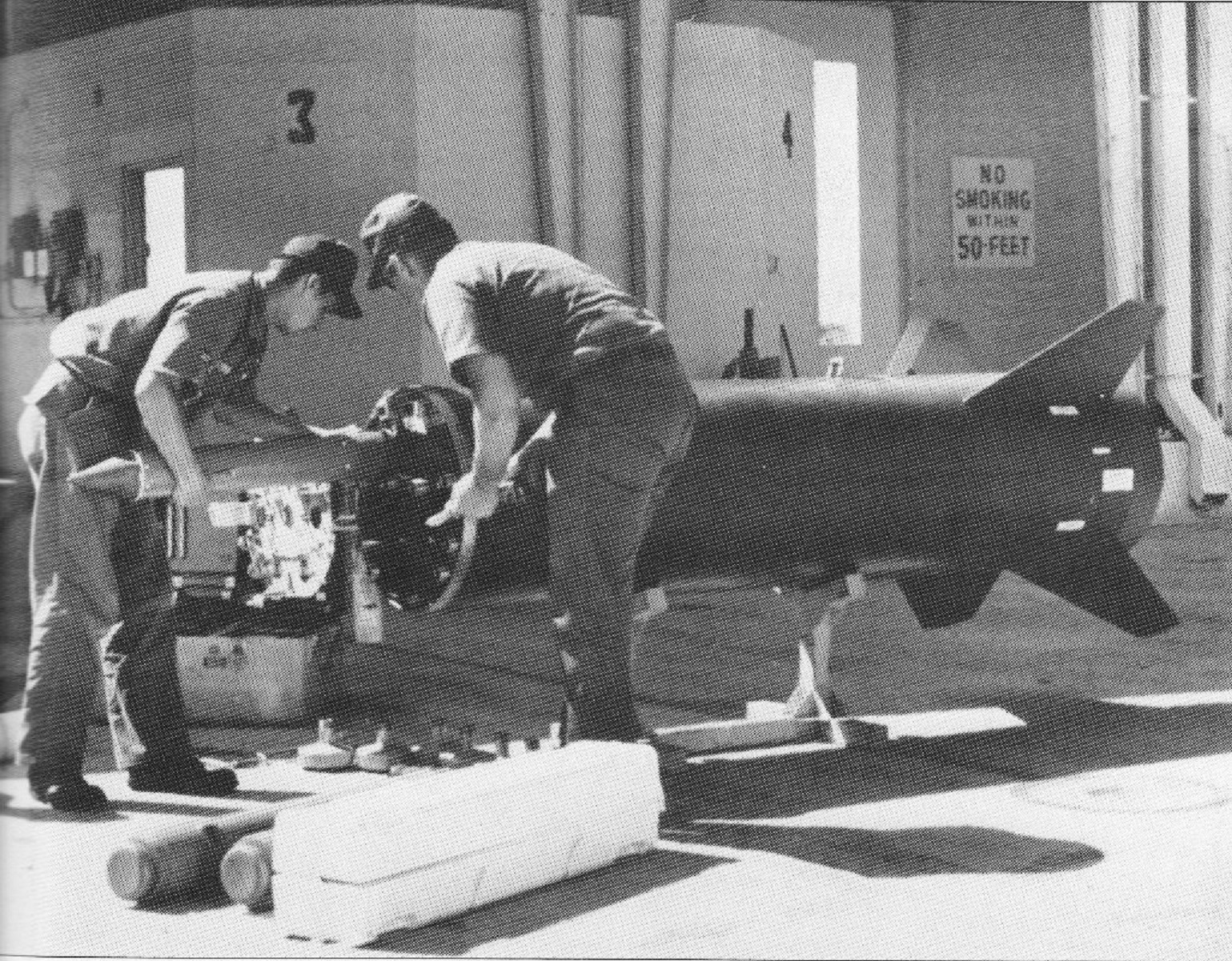U.S. Air Force ordnancemen load a dispenser with seismic sensors. U.S. Air Force photo. Public Domain.
During the Vietnam War, the United States faced a formidable logistical challenge: the Ho Chi Minh Trail, a vast and complex network of roads, paths, and supply routes that enabled North Vietnamese forces to infiltrate South Vietnam through Laos and Cambodia. Traditional military tactics proved insufficient to halt this flow of troops and materiel. In response, the U.S. launched a groundbreaking electronic warfare initiative, initially known by various codenames such as Practice Nine, Illinois City, Dye Marker, and Muscle Shoals, before being officially designated Operation Igloo White in 1968. This ambitious program fused cutting-edge technology with aerial surveillance and sensor networks to detect and interdict enemy movement.
Spanning from 1967 to 1973, Igloo White was a bold attempt to automate battlefield intelligence and revolutionize warfare. Though its effectiveness remains debated, the operation marked a turning point in the use of real-time surveillance, acoustic sensors, and computer-assisted targeting in combat.

Origins and Strategic Vision
The conceptual roots of Igloo White trace back to Secretary of Defense Robert McNamara’s vision of a high-tech barrier known as the McNamara Line, which was designed to prevent infiltration from North Vietnam. Initially, the plan involved a physical barrier composed of minefields and fortifications. Over time, however, the concept evolved into a virtual fence that relied on electronic sensors and airborne relays to monitor enemy movement.
By 1967, the project had gone through several name changes, including Practice Nine, Illinois City, Dye Marker, and Muscle Shoals. It was officially named Igloo White in June 1968. The operation was intended to detect enemy activity along the Ho Chi Minh Trail and guide airstrikes with a level of precision that had not been previously possible.
Components of the Operation
1. Sophisticated Sensors
One of the core components of Operation Igloo White was the deployment of a sophisticated network of sensors across the jungles of Laos and Vietnam. These sensors were air-dropped by U.S. aircraft into strategic locations along the Ho Chi Minh Trail, where they served as the eyes and ears of the operation. The sensor types varied in function and design. Acoustic sensors were used to detect sounds such as truck engines, footsteps, and human voices, providing audio cues of enemy movement. Seismic sensors registered ground vibrations, making it possible to identify the passage of vehicles or groups of soldiers. Magnetic sensors were employed to detect the presence of metal objects, such as trucks or weaponry, hidden beneath the jungle canopy.

Perhaps the most innovative devices were the Tactical Remote Sensor Transmitters, or TURDSIDs. These transmitters were camouflaged to blend seamlessly into the natural environment, often disguised as twigs, rocks, or even animal droppings, to avoid detection and destruction by enemy forces. Once activated, they transmitted real-time data via radio signals to airborne relay aircraft, which then forwarded the information to ground-based analysis centers. This sensor deployment strategy was a technological leap in battlefield surveillance, allowing the U.S. military to monitor enemy activity in remote and otherwise inaccessible terrain with unprecedented precision.
2. Airborne Relay Aircraft
Modified aircraft such as the EC-121R Warning Star and OP-2E Neptune flew overhead to collect sensor data and relay it to ground stations. These planes acted as communication hubs, ensuring real-time transmission of battlefield intelligence.

3. Infiltration Surveillance Center (ISC)
Located at Nakhon Phanom Royal Thai Air Force Base, the ISC was the nerve center of Igloo White. Here, computers processed sensor data and analysts interpreted patterns to identify enemy activity. The ISC then directed strike aircraft to engage targets based on sensor input.
Tactical Execution and Integration
Igloo White was closely integrated with Operation Commando Hunt, a broader aerial interdiction campaign launched in 1969. Together, these operations aimed to disrupt the flow of supplies and reinforcements to the Viet Cong and North Vietnamese Army (NVA).
The system was first tested during the Battle of Khe Sanh in early 1968, where it proved effective in detecting enemy buildup. Over time, the operation expanded to cover vast stretches of the Ho Chi Minh Trail, with sensors dropped in strategic choke points and high-traffic areas.
Aircraft such as the OV-1 Mohawk, equipped with infrared sensors, were used to detect heat signatures from truck engines hidden under jungle canopy. Analysts also monitored changes in foliage color, such as red dust settling on treetops, as indicators of recent vehicle movement.

Cost and Controversy
Operation Igloo White was one of the most expensive technological ventures undertaken by the United States during the Vietnam War. The development costs alone were staggering, estimated between $1 billion and $1.7 billion, with annual operational expenses adding another $1 billion. This massive investment reflected the U.S. military’s belief in the promise of electronic warfare and automated surveillance to counter the elusive tactics of the NVA.
However, despite its technological sophistication, the operation faced significant criticism. One of the primary concerns was its overall effectiveness. Although thousands of enemy trucks were reportedly destroyed based on sensor data, the NVA quickly adapted to the threat. They employed decoys, shifted to nighttime movements, and repaired damaged routes with impressive speed and efficiency, often rendering the strikes less impactful than anticipated.
Another major issue was the prevalence of false positives. The sensors, while advanced for their time, frequently misinterpreted environmental sounds or animal movements as enemy activity. This led to numerous wasted airstrikes, expending valuable resources and potentially compromising the credibility of the system among field commanders.
Finally, the logistical complexity of maintaining the sensor network and coordinating with airborne relay aircraft posed a constant challenge. The operation required meticulous planning, continuous monitoring, and a vast support infrastructure to keep the system functional. These demands strained personnel and resources, raising questions about whether the benefits of Igloo White justified its enormous cost and operational burden.
Intelligence and Innovation
Operation Igloo White marked a groundbreaking moment in the evolution of battlefield surveillance and military intelligence. As one of the earliest large-scale efforts to automate the collection and analysis of combat data, it introduced a suite of innovations that would influence military operations for decades to come. Central to its success was the use of real-time data processing. At the Infiltration Surveillance Center (ISC) in Nakhon Phanom, IBM computers were employed to rapidly analyze incoming sensor data and convert it into actionable intelligence. This allowed analysts to detect patterns of enemy movement and coordinate airstrikes with unprecedented speed and precision.
The operation also pioneered remote sensing techniques, utilizing acoustic and seismic sensors to monitor activity in otherwise inaccessible jungle terrain. These technologies laid the foundation for modern unmanned surveillance systems, such as drones and satellite-based reconnaissance platforms, which now play a central role in contemporary warfare. Additionally, Igloo White demonstrated the potential of electronic warfare by integrating sensor networks, airborne relays, and computer systems into a cohesive combat strategy. This fusion of digital and traditional tactics represented a significant shift in how wars could be fought.
Legacy and Lessons
Operation Igloo White officially came to an end in February 1973, coinciding with the broader withdrawal of U.S. forces from Vietnam. Its legacy remains complex and multifaceted. On one hand, the operation stood as a testament to American ingenuity and technological ambition. It demonstrated how advanced electronics, real-time data processing, and integrated surveillance systems could be harnessed to reshape the battlefield. The sheer scale and sophistication of Igloo White were unprecedented, and it laid the groundwork for future innovations in military intelligence and electronic warfare.
On the other hand, the operation exposed the limitations of relying too heavily on technology in the context of asymmetric warfare. The NVA proved remarkably resilient and adaptive, quickly developing countermeasures to evade detection and neutralize the sensor network. Their use of decoys, nighttime movements, and rapid trail repairs highlighted the enduring effectiveness of guerrilla tactics, especially in the dense and unpredictable terrain of Southeast Asia. These challenges underscored a critical lesson: technology alone cannot guarantee success against a determined and resourceful adversary.
Today, Operation Igloo White is studied as an early example of digital warfare. It offers valuable insights into the balance between innovation and practicality, reminding military strategists that while cutting-edge tools can enhance capabilities, they must be paired with flexible tactics and a deep understanding of the operational environment. The operation’s successes and shortcomings continue to inform the development of modern surveillance systems and the strategic use of electronic intelligence (ELINT) in contemporary conflicts.
Final Thoughts
Operation Igloo White was a bold experiment in electronic warfare, born from the frustration of a protracted and elusive conflict. It combined sensors, aircraft, and computers into a sprawling surveillance system that aimed to turn the tide of war through technology.
While its strategic impact remains debated, its influence on military doctrine is undeniable. From drones to satellite surveillance, the seeds planted by Igloo White continue to shape how wars are fought in the 21st century.

To whom it may concern,
During the Vietnam war, I served with the USMC top secret electronic sensor teams of the 3rd Marine Division Ground Surveillance Unit from July through December of 1969 and the 1st Marine Division SCAMP Unit (Sensor Control and Management Platoon) from January through July 1970. We “hand implanted” and monitored these devices in and along the DMZ, the Ho Chi Minh trail and other remote jungle enemy supply routes.
I am in contact with a dozen or so of my Vietnam war veteran team members and we are in possession of hundreds of photos, mission stories, etc. If someone is interested in researching this information, please contact me via my email or mobile phone.
Semper Fi,
Bill Lavelle
Email: Billav@aol.com Mobile phone: (570) 468-9813